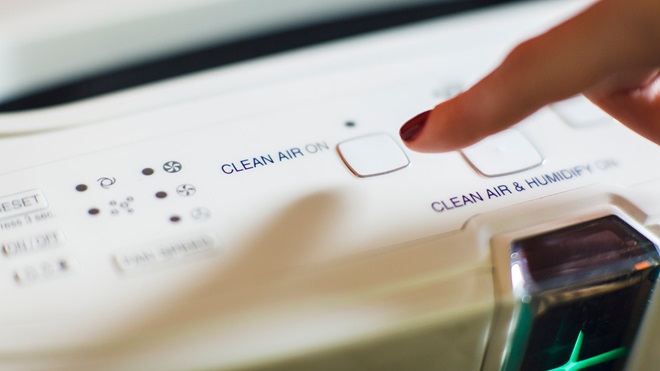Air purifiers are basically fans with filters inside. Air is sucked in and passed through the filters to capture any particles floating in it. Our experts put them in a sealed test room to measure how well they clean the air of dust, smoke and volatile organic compounds (VOCs).
On this page:
Our expert testers
We've been testing air purifiers for a few years now, and our expert testers know what makes a good one. They also have more than 20 years' experience in heating and cooling products, ranging from pedestal fans to split system air conditioners, portable air cons and ceiling fans.
Most CHOICE product reviews are conducted in our own labs, but when a test calls for skills or equipment that we don't have, and that aren't cost-effective for us to obtain, we partner with other expert, accredited labs. This is the case with our air purifier tests.
How we choose what we test
With so many to choose from, what makes us choose one air purifier to test over another? As with most of our product testing, our aim is to test the most popular brands and types on the market, and what you're most likely to see in shops. Our members can then compare the best performing models to suit their needs.
- We survey manufacturers to find out about their range of products.
- We check market sales information.
- We check for any member requests to test specific air purifiers.
From this information we put together a final list that goes to our buyers. They then head to the retailers (online or in person) and purchase each product, just as a regular consumer would. We do this so we can be sure the products are the same as any consumer would find them and not 'tweaked' for better performance.
Sometimes there is limited available stock for particular products due to unusual conditions and this has sometimes been the case with air purifiers due to high demand in times of bushfire smoke and the COVID-19 pandemic. This means we can only include the models we're able to actually purchase at the time of testing.
How we test air purifiers
We test each air purifier with particles of dust, smoke and volatile organic compounds (VOCs) to measure how quickly and effectively it removes them from the air. This test is based on the Clean Air Delivery Rate (CADR) industry standard test for air purifiers. It's a good way to compare models, but be aware that performance in your home might be different due to different room sizes and shapes and varying levels of pollutants.
Each unit is tested on its highest fan speed setting to give it its best chance of performing well.
The pollutant (dust, smoke or VOC) is introduced in a controlled way into the test chamber and mixed into the air, then the testers measure how fast it naturally precipitates or decays from the air. The chamber is then cleared and the test repeated, this time with the air purifier running. We calculate the percentage of particles removed by the air purifier and compare this with the natural decay rate measured earlier. This tells us how quickly and effectively the air purifier is clearing the air.
We test models on their highest and lowest settings so you'll know which ones are least likely to disturb you
The best air purifiers will remove more than 90% of the particles used in our tests. The worst remove significantly less than this.
We test dust removal using fine particles of titanium dioxide. Smoke removal is tested by burning wood chips, and VOC removal is tested with acetone.
Since 1 in 10 air purifier owners we spoke to told us that their machine affected their sleep, we test models on their highest and lowest settings so you'll know which ones are the least likely to disturb you
What about pollen, germs and mould spores?
Pollen is a common indoor air pollutant and is a typical test for air purifiers, but unfortunately technical challenges with pollen testing have made it difficult to include that particular test. However, any model which performs well at dust and smoke removal should also be good at removing pollen.
Likewise, our test lab doesn't have the capacity to handle microorganisms, so testing with viruses, bacteria and mould spores isn't possible for us. The good news is that research shows that a HEPA filter is able to capture these tiny particles. An air purifier that performs well for smoke and dust filtration should be able to trap microorganisms too, but don't expect it to be able to keep your home completely germ-free.
Test criteria explained
The CHOICE Expert Rating (our overall score) is made up of performance (70%) and ease of use (30%). We weight each of our criteria a little differently based on the consumer need.
Performance
- Dust, smoke and VOC removal, weighted 50%, 40% and 10% respectively, make up the performance score.
Ease of use
- This score is based on the model's on-board controls, its remote (if it has one), how easy it is to move around, whether it's prone to tipping over, how easy it is to clean, and the quality of the supplied instruction manual.
We're on your side
For more than 60 years, we've been making a difference for Australian consumers. In that time, we've never taken ads or sponsorship.
Instead we're funded by members who value expert reviews and independent product testing.
With no self-interest behind our advice, you don't just buy smarter, you get the answers that you need.
You know without hesitation what's safe for you and your family. And our recent sunscreens test showed just how important it is to keep business claims in check.
So you'll never be alone when something goes wrong or a business treats you unfairly.
Learn more about CHOICE membership today
Stock images: Getty, unless otherwise stated.



